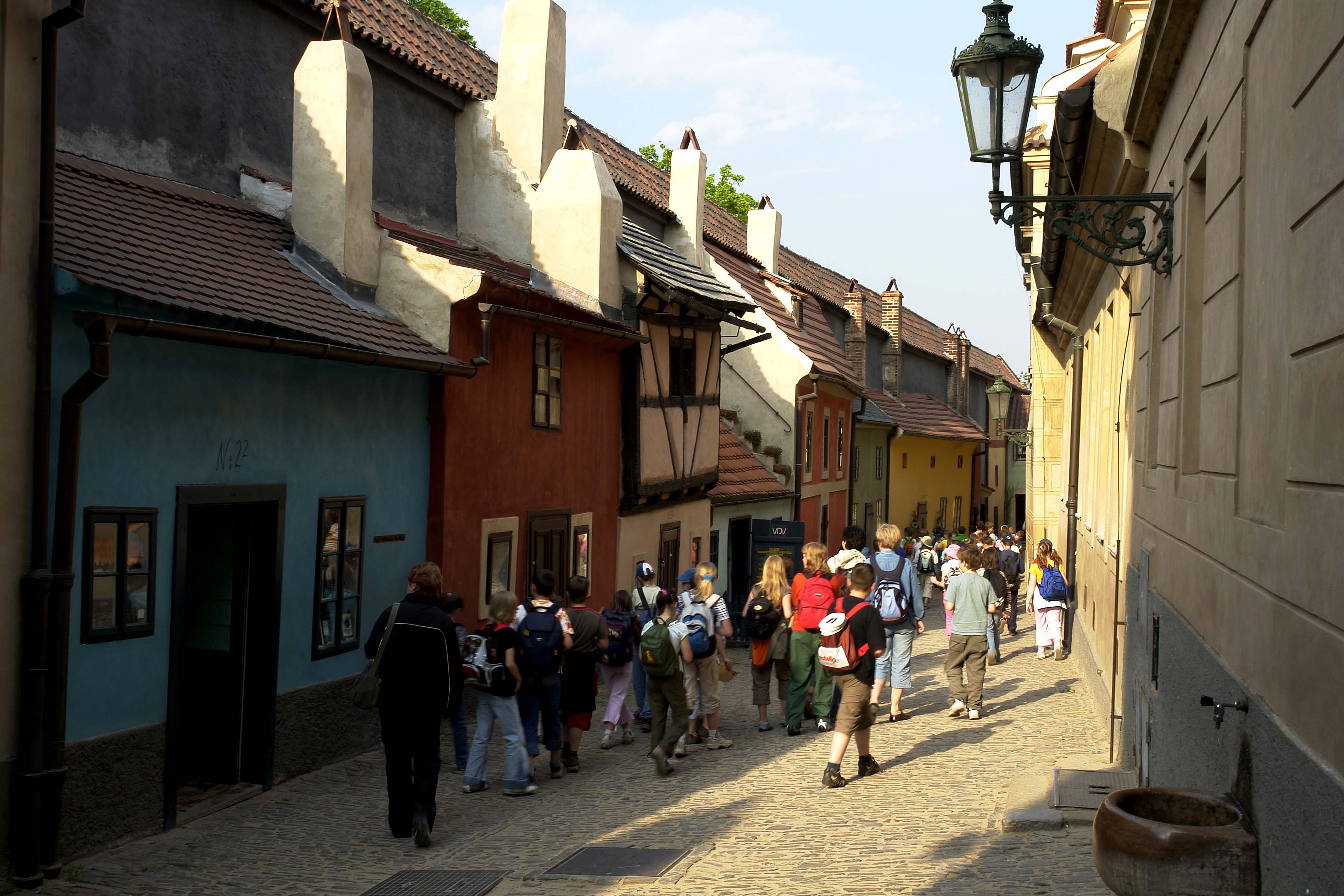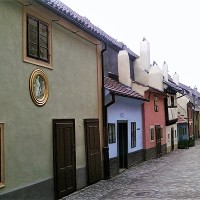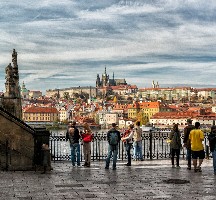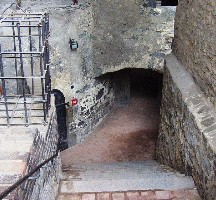Breadcrumbs navigation
Prague Castle - Golden Lane (Zlatá ulička)
This tiny street between the Bílá Tower and the Daliborka Tower is lined with colourful houses resembling something out of a fairy tale. These houses were built into the castle's fortifications around the end of the 16th century and were occupied until the Second World War. The current appearance of the Golden Lane dates to the year 1955, and after a recent extensive renovation, the houses now contain exhibitions about life in the lane over the past 500 years. Franz Kafka lived and worked in house number 22 from 1916 to 1917. The Golden Lane is part of the Prague Castle guided tour.
- Monuments & Architecture
- castle/chateau
- romance
- with children
- Prague Visitor Pass
Opening hours
-
- November – March
- Whole week
- 09.00 – 16.00
-
- April – October
- Whole week
- 09.00 – 17.00
closed: 24 December
Practical information
ADMISSION FEE:
- part of the Prague Castle circuit admission
- after the closing time the Lane is accessible for free without the possibility to visit the interiors of the houses
Permanent exhibition in nine out of the 16 houses, documenting the life in the lane over the past five centuries. All the rooms depict real persons (except for the alchemists, who are fictitious) who lived there from the 16th century all the way to the 1950s; for example the household of the lane’s oldest citizens - the so called red shooters who would guard the castle gates, a goldsmith’s workshop, a pub, a herbalist’s house, the household of renowned Prague clairvoyant and fortune-teller Matylda Průšová, or of an amateur film historian, Mr. Kazda, who would hide copies of the contemporary Czech films against the Nazis.
In other houses, there are little stores with hand-made souvenirs, such as wooden toys, marionettes, ceramics, tin figures, jewellery or books relating to the most famous citizen of this lane - Franz Kafka.
Defensive corridor leads over the roofs of the houses and is hidden behind stone masonry of the walls. Formerly empty corridor is now lined with knight armour. Access from the Bílá věž (White Tower) or the green house near the Daliborka Tower.
Bílá věž (White Tower) closes the western end of Golden Lane. Formerly a defensive tower was used as a prison from 1586 where offenders especially from the nobility were imprisoned. Last prisoner left the tower in 1743.
Today, visitors can see an alchemist's room here. However, alchemists have never lived in the Golden Lane.
small café
Contacts
- Prague Castle - Golden Lane (Zlatá ulička)
- Zlatá ulička
- 119 08 Praha 1 – Hradčany
- +420224372423
Object history
At about the middle of the Jiřská Street, there is a turning to the picturesque Golden Lane. In the past, it used to be called the Goldsmiths Lane, perhaps it served as dwelling for the goldsmiths. It was founded between the Romanic and the late Gothic fortifications at the Castle’s Northern side. Little houses were built in the fortification arches of the defence walls built by Benedikt Ried around 1500, and behind them, there are the peaks of the fortifications. Underroof is formed by a defence corridor connecting the White Tower and Daliborka. In the 16th century, there were distress houses here; in the era of Rudolf II it was a dwelling for the members of the castle guard. Later on, poor people lived here. Franz Kafka had his office in house No. 22 in 1917, and writers and poets (František Halas, Jaroslav Seifert, Vítězslav Nezval) used to meet in house No. 12, the home of Jiří Mařánek. From here, there is an entrance to a terrace of the late-Gothic fortifications between Daliborka and the Black Tower. After World War II, the houses were not inhabited any more.
In the years 2010 - 2011, the Golden Lane went through a complex reconstruction. Today there is a permanent exposition in nine out of the 16 houses, documenting the life in the lane over the past five centuries. All the rooms depict real persons (except for the alchemists, who are fictitious) who lived there from the 16th century all the way to the 1950s; for example the household of the lane’s oldest citizens - the so called red shooters who would guard the castle gates, a goldsmith’s workshop, a pub, a herbalist’s house, the household of renowned Prague clairvoyant and fortune-teller Matylda Průšová, or of an amateur film historian, Mr. Kazda, who would hide copies of the contemporary Czech films against the Nazis. In other houses, there are little stores with hand-made souvenirs, such as wooden toys, marionettes, ceramics, tin figures, jewellery or books relating to the most famous citizen of this lane - Franz Kafka.
There is a cylindrical White Tower at the Western end of the lane, the lower part of which was used as a dungeon, torture chamber and prison. For example, alchemist Edward Kelly was imprisoned here. The prison remained here until the mid-18th century.
Information source: www.hrad.cz







